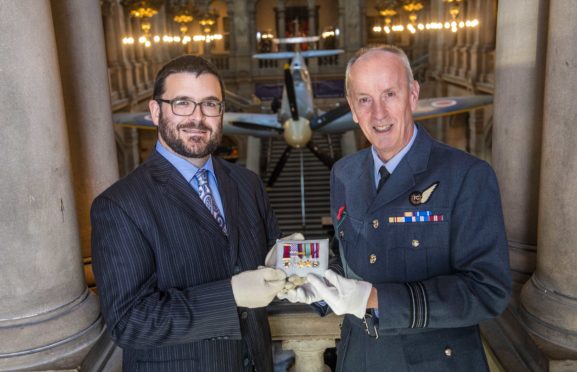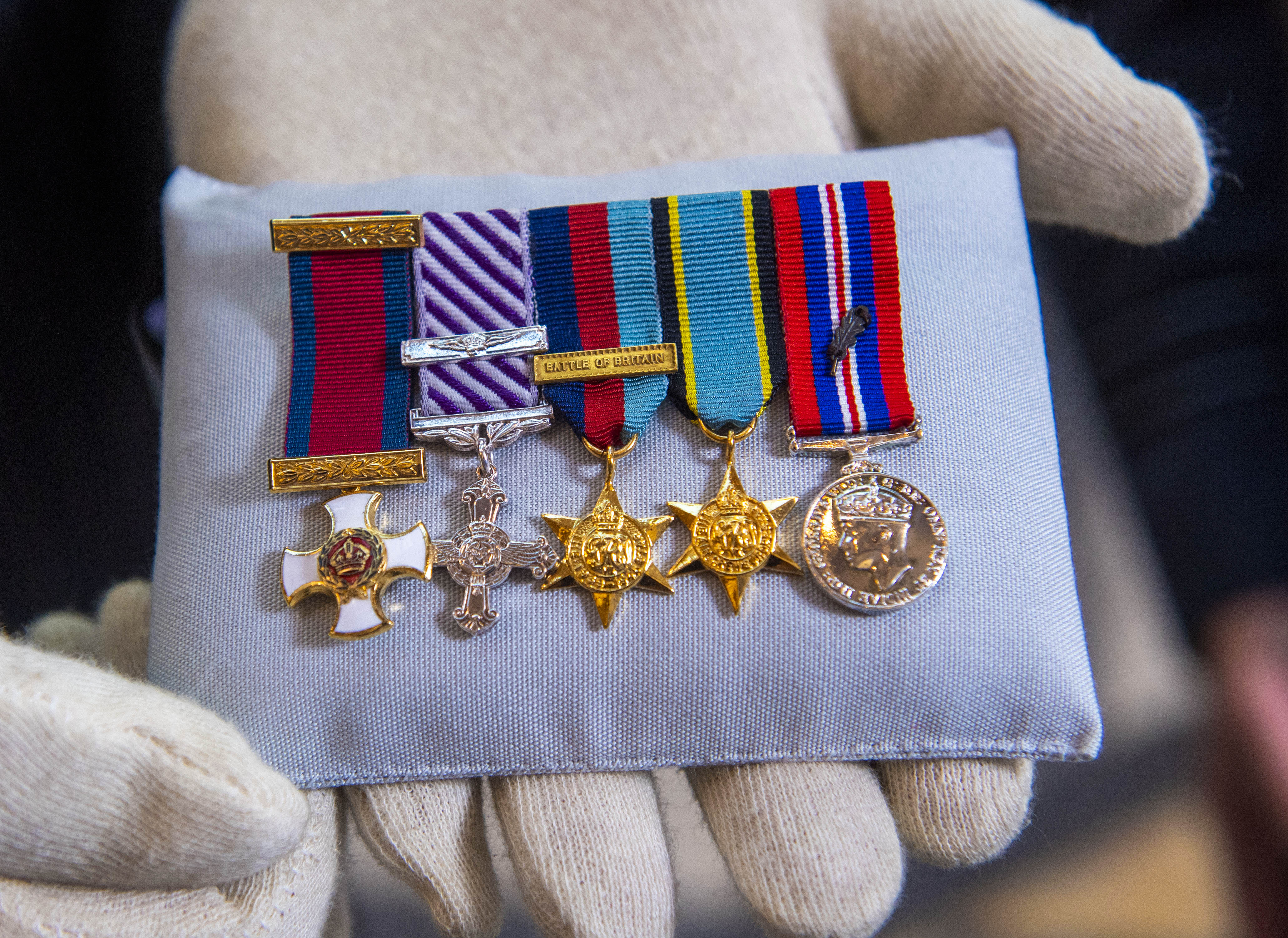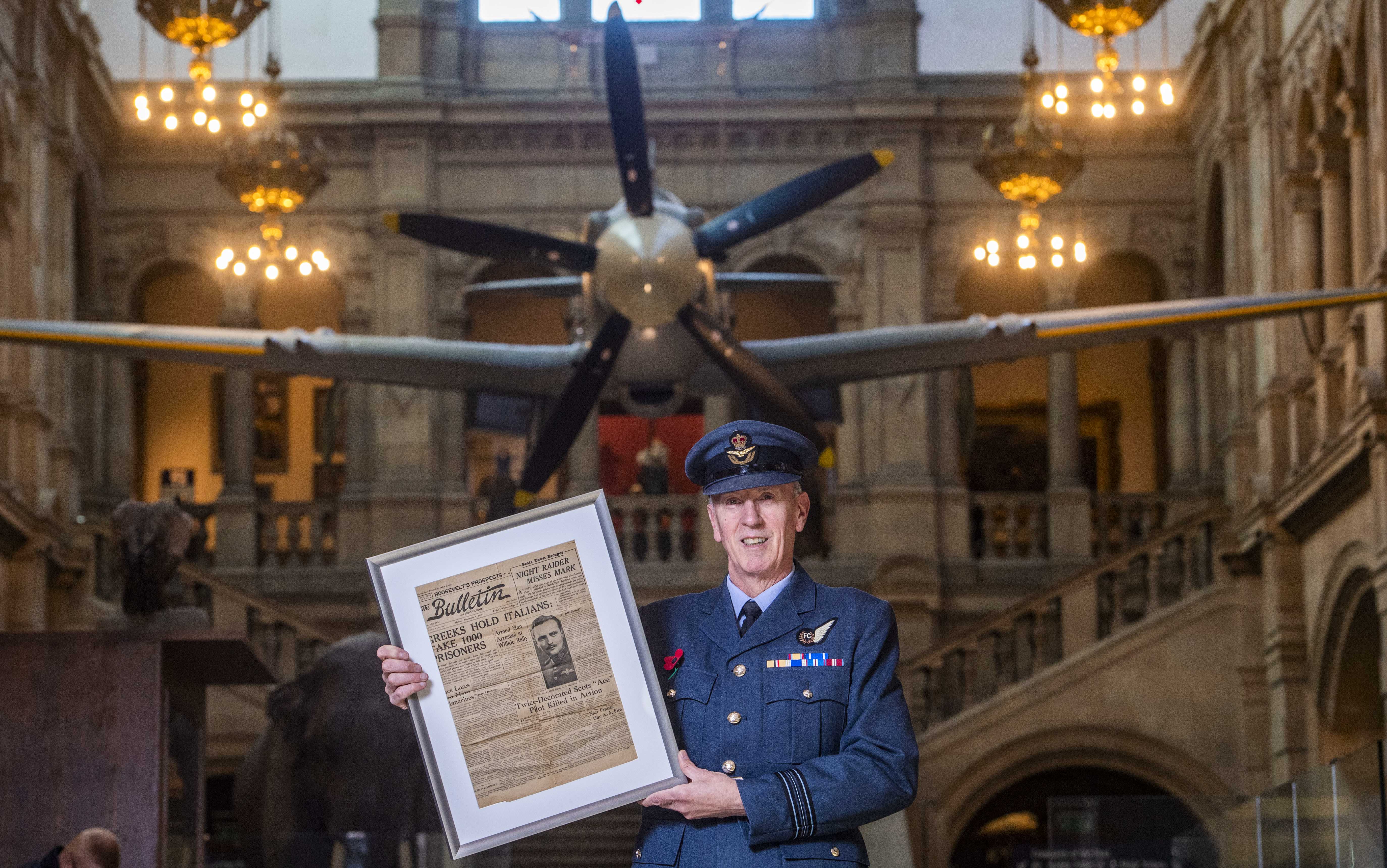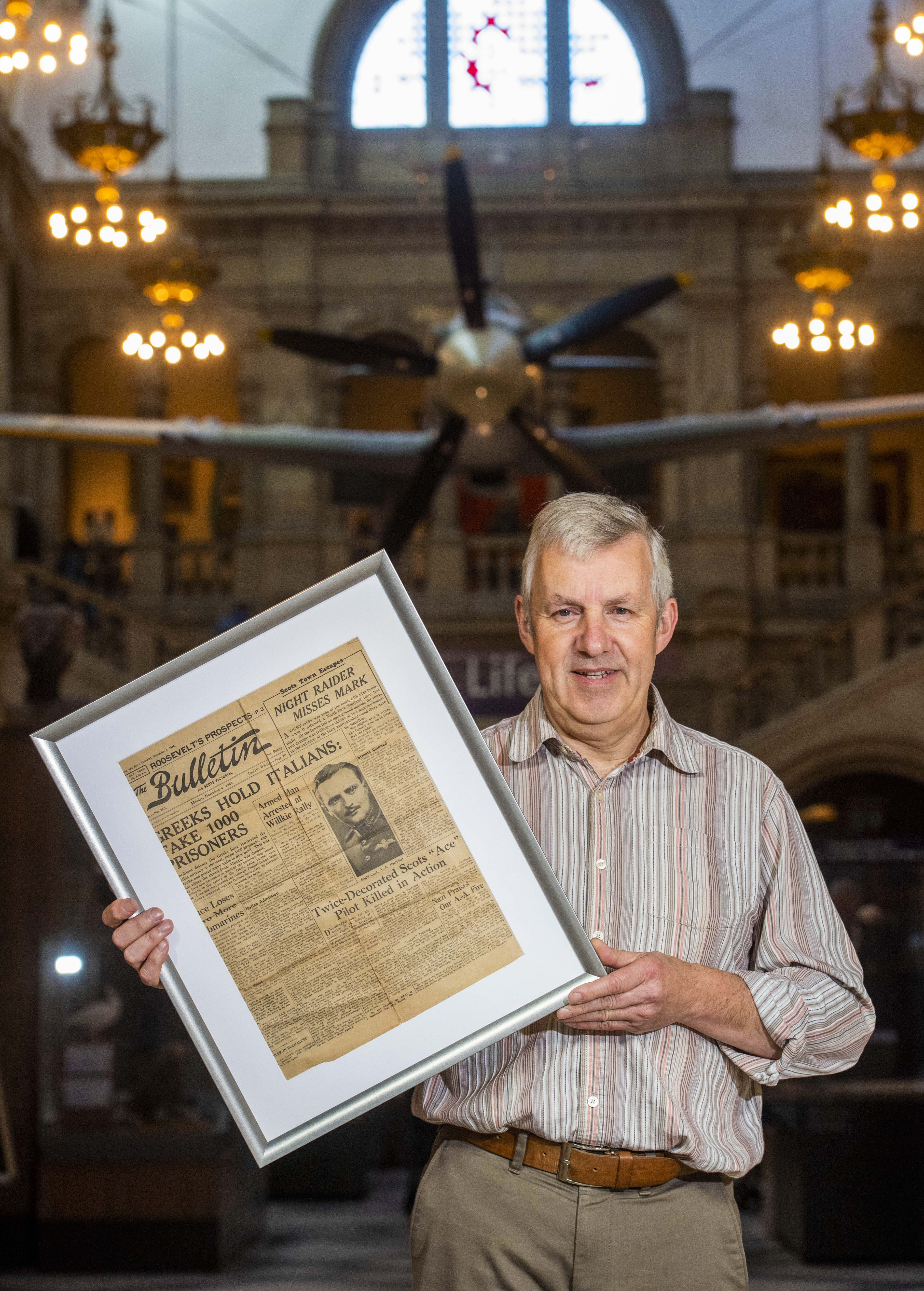
A new display centred on the 602 (City of Glasgow) Auxiliary Air Force Squadron’s actions at the start of World War II has been unveiled at Glasgow’s Kelvingrove Art Gallery and Museum.
At the centre are the exploits of distinguished pilot, Squadron Leader Archibald ‘Archie’ McKellar DSO DFC & Bar, who shot down the first German aircraft on British soil on 28 October 1939.
Located within the wider Conflict and Consequences gallery, which explores the true cost of war, the display features a number of items on loan from the 602 Squadron Museum’s collection.
These include a wing panel from the Heinkel HE-111 Bomber shot down by McKellar, which crash landed intact.
It allowed others to study the plane and learn the secrets of German aircraft and engine design.
Pieces were often taken as souvenirs, two of which survive to this day.
Also on show are letters he wrote and received, photographs and a portrait, together with a uniform representing the one Archie would have worn in 1940, crucial in protecting him from the freezing temperatures experienced at higher altitudes.
Roddy MacGregor, Honorary Secretary of 602 (City of Glasgow) Auxiliary Air Force Squadron Museum Association was among the first to see the new display at Kelvingrove Museum.
He showed visitors some miniature medals Archie McKellar had won while in action during WWII.
He said: “We’ve relished the opportunity to work with the team at Glasgow Museums to create this new display on the 602 (City of Glasgow) Squadron’s actions at the start of World War II.
“We very much hope it will add to the important conversation about the human side of conflict today.”
He was joined by Sqn Ldr Archie McCallum, the current commander of the 602 (City of Glasgow) Squadron and a relative of Archie McKellar, Colin McKellar.
Colin said: “It is wonderful to see Archie McKellar’s story on show in Kelvingrove Museum.
“I have long admired Archie’s contribution to the war effort and it’s fitting it is recognised in the new display.
“I am sure Archie would be quietly moved to see his squadron’s achievements marked in this way.”
Born in Paisley in 1912, Archie McKellar wanted to join the army, but his parents thought it too dangerous.
Before the war he was a part-time pilot, working as an apprentice plasterer for his family business.
He joined the Auxiliary Air Force in 1936 and was commissioned as a Pilot Officer in 602 (City of Glasgow) Squadron.
Following the outbreak of war in September 1939, the Spitfires of 602 Squadron were posted to RAF Drem in East Lothian.
On 28 October, he shot down a Heinkel HE-111 Bomber over Humbie, near Edinburgh, claiming the first German aircraft shot down on to British soil in WW2.
In 1940, he was promoted to Flight Lieutenant and went on to become one of the ‘Few’, the men credited by Prime Minister Winston Churchill as winning the Battle of Britain and seeing off invasion.
Archie became a successful and decorated fighter pilot. He was awarded the Distinguished Flying Cross and Bar and the Distinguished Service Order for shooting down 21 enemy aircraft, including five Messerschmitt Bf 109 fighters in a single day, earning him the illustrious honour of ‘ace in a day’.
Ultimately, after only 14 months, and like so many other young men of his generation, war cost him his life.
He was shot down and killed in action over Kent on 1 November 1940, aged just 28.
Glasgow’s Lord Provost Sir Patrick Dollan conveyed his sadness and thanks to the McKellar family on the death of their son – calling him a ‘Number One Man’.
This letter forms part of the display.
The Conflict and Consequences gallery is located on the first floor of Kelvingrove Art Gallery and Museum, for more information visit www.glasgowmuseums.com

Enjoy the convenience of having The Sunday Post delivered as a digital ePaper straight to your smartphone, tablet or computer.
Subscribe for only £5.49 a month and enjoy all the benefits of the printed paper as a digital replica.
Subscribe © Bill Murray / SNS Group
© Bill Murray / SNS Group © Bill Murray / SNS Group
© Bill Murray / SNS Group © Bill Murray / SNS Group
© Bill Murray / SNS Group